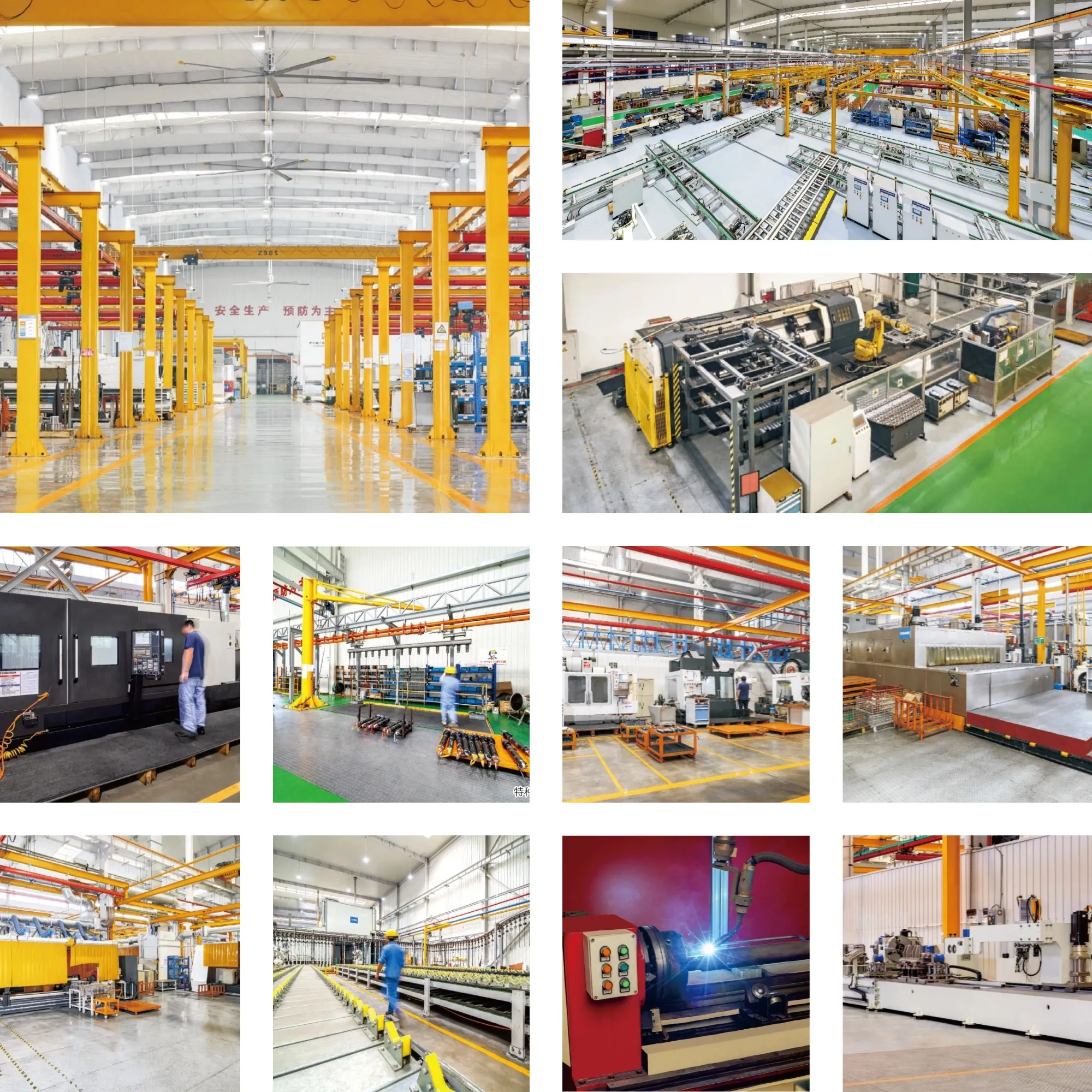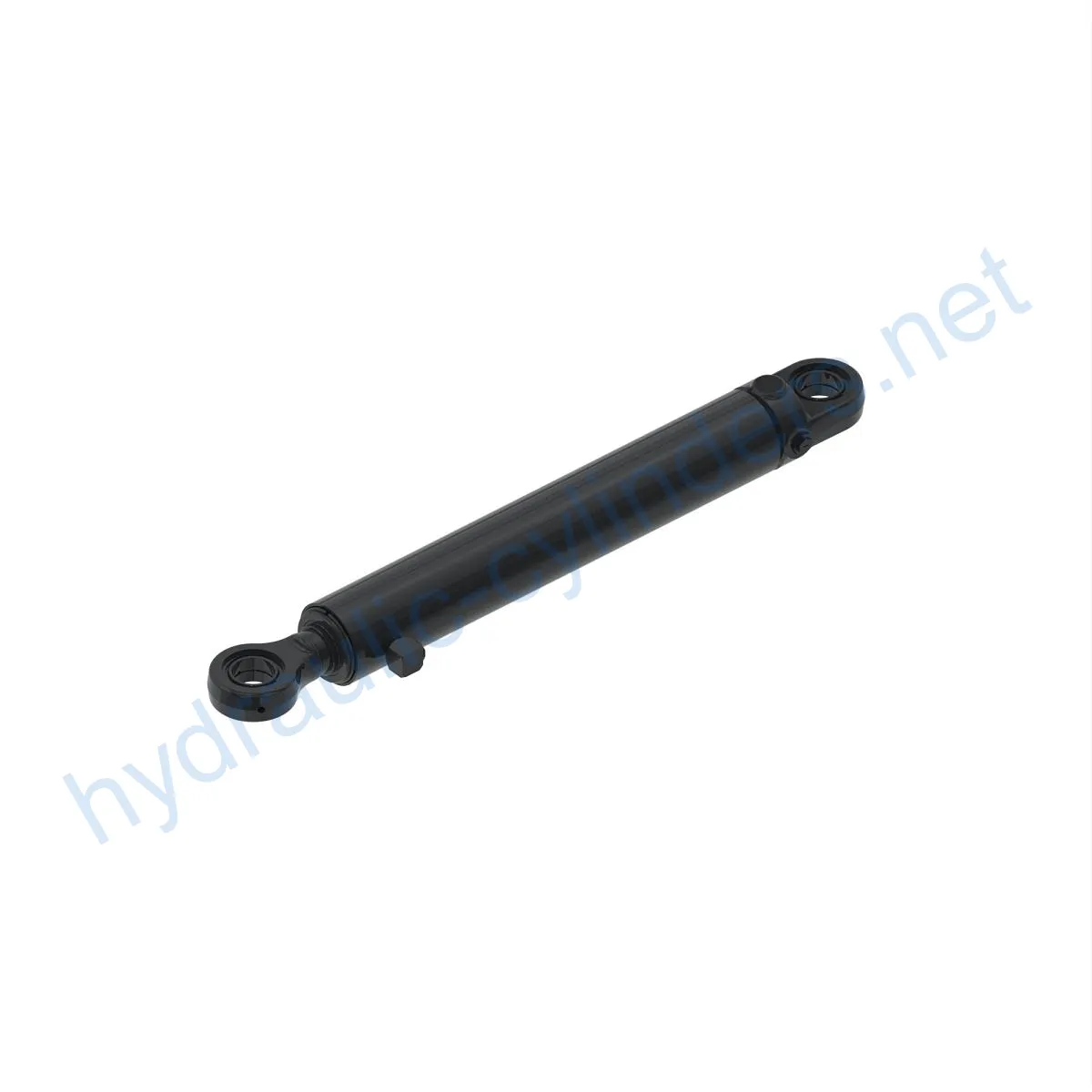Replacement Of AHC15750 Angle Hydraulic Cylinder
Mint a hidraulikus hengerek egyik gyártója, szállítója és exportőre a mechanikai termékek, kínálunk hidraulikus hengerek és sok más termék.
Kérjük, lépjen kapcsolatba velünk a részletekért.
Posta:sales@hydraulic-cylinders.net
Hidraulikus hengerek gyártója, szállítója és exportőre.
Replacement Of AHC15750 Angle Hydraulic Cylinder
The Replacement Of AHC15750 Angle Hydraulic Cylinder is a type of hydraulic cylinder that is commonly used in various heavy-duty equipment. It is designed to provide the necessary power to lift, push, and pull heavy loads. This hydraulic cylinder plays a crucial role in the operation of equipment such as excavators, cranes, tractors, harvesters, and more.
Specification and Model
The Replacement Of AHC15750 Angle Hydraulic Cylinder has a weight of 80 lb, a height of 4.3 in, a width of 5.9 in, and a length of 38 in. It is compatible with the 700J and 700K models.
Features
- Improved Equipment Performance: Replacing damaged or worn hydraulic cylinders can restore the equipment’s normal operations and ensure its performance in various applications.
- Enhanced Safety: Regularly replacing hydraulic cylinders can reduce safety hazards caused by cylinder failure and ensure the safety of operators and equipment.
- Overload Protection: New cylinder designs generally consider better overload protection mechanisms, thereby improving safety.
- Quick Installation: Modern hydraulic cylinder designs typically consider ease of installation and replacement, reducing downtime.
- Standardized Components: Many hydraulic cylinders are standardized products, making it easier to obtain replacement parts on the market.
We produce hydraulic cylinders that can perfectly replace these cylinders. Our products are of high quality and can meet your needs.
Applications
The Replacement Of AHC15750 Angle Hydraulic Cylinder is used in various applications, including:
- Excavators: The hydraulic cylinder in the arm or bucket of an excavator may become damaged due to long-term use or overload and needs to be replaced to restore normal operations.
- Cranes: The crane’s boom hydraulic cylinder is susceptible to wear during frequent lifting and lowering and needs to be replaced regularly to ensure safety.
- Tractors: The front-end loader hydraulic cylinder of a tractor may leak or experience performance degradation during continuous raising and tilting operations, requiring replacement.
- Harvesters: During harvesting, the hydraulic system is subjected to high pressure, and the cylinder may become damaged due to fatigue, requiring timely replacement to maintain work efficiency.
- Automated Production Lines: Hydraulic cylinders are used to control robotic arms and other automated equipment. If the cylinder fails, it can affect production efficiency and needs to be replaced immediately.
- Die Casting Machines: Hydraulic cylinders may experience performance degradation in high-pressure and high-temperature environments. Regular replacement can ensure product quality.
Karbantartás
Regular maintenance of hydraulic cylinders is essential to ensure their proper operation and prolong their service life. The following are three common maintenance tasks:
Regular Inspection
Periodic inspection of hydraulic cylinders can help detect potential problems and prevent equipment failure. It is essential to check for signs of wear and tear, leaks, misalignment, and damage, and take corrective action if necessary.
Proper Lubrication
Hydraulic cylinders require proper lubrication to ensure smooth operation and prevent excessive wear. It is recommended to use the appropriate hydraulic oil and apply it to the cylinder’s moving parts regularly.
Seal Replacement and Calibration Check
Seals play a crucial role in preventing hydraulic fluid leaks and protecting the cylinder’s internal components. It is essential to replace damaged or worn seals promptly and check the cylinder’s calibration to ensure proper operation.
Safety Considerations and Environmental Factors
When using hydraulic cylinders, it is essential to follow the relevant safety regulations and take appropriate safety measures to prevent accidents. It is recommended to wear appropriate personal protective equipment, such as goggles and gloves, when handling hydraulic cylinders.
Environmental factors, such as temperature and humidity, can affect the performance of hydraulic cylinders. It is essential to store and use cylinders in a dry and clean environment and avoid exposure to corrosive substances or extreme temperatures.
Troubleshooting and Common Problems
Common problems with hydraulic cylinders include leaks, seal damage, misalignment, and wear and tear. If you experience any of these problems, it is recommended to take corrective action promptly.
Here are some tips for troubleshooting and resolving hydraulic cylinder problems:
- Inspect the cylinder for visible signs of wear and tear, leaks, or damage.
- Check the calibration of the cylinder to ensure proper operation.
- Replace damaged or worn seals promptly to prevent leaks.
- Ensure proper lubrication of the cylinder to prevent excessive wear.
It is recommended to take preventive measures to minimize potential problems, such as regular inspection and maintenance.

Design Considerations and Selection Criteria
When selecting hydraulic cylinders, it is essential to consider factors such as load-bearing capacity, sealing, durability, safety, and maintenance. These factors can affect the cylinder’s performance and service life.
Here are some design considerations and selection criteria:
- Load-Bearing Capacity: The cylinder’s load-bearing capacity should match the equipment’s requirements to ensure proper operation.
- Sealing: The cylinder’s seals should be made of durable and wear-resistant materials to prevent leaks and ensure proper operation.
- Durability: The cylinder should be made of high-quality materials and designed to withstand harsh operating conditions.
- Safety: The cylinder should incorporate safety features, such as overload protection, to prevent accidents.
- Maintenance: The cylinder should be designed to facilitate maintenance and repair to minimize downtime.
Sealing and Lubrication
Proper sealing and lubrication are crucial for the cylinder’s proper operation and prolonging its service life. Here are some tips:
- Use various sealing components, such as piston seals and rod seals, made of durable and wear-resistant materials such as polyurethane and nitrile rubber.
- The cylinder’s body and threaded end surfaces should be finely processed to improve wear resistance.
- Regularly add the appropriate amount of hydraulic oil to lubricate the cylinder’s moving parts and ensure smooth operation.
Installation Guide
Proper installation is crucial for the cylinder’s proper operation and preventing accidents. Here are some installation tips:
- Ensure proper alignment of the cylinder during installation to prevent misalignment and uneven loading.
- Use appropriate installation brackets to secure the cylinder in place and prevent it from moving.
- Follow the recommended inspection and repair procedures to prevent potential problems and prolong the cylinder’s service life.
About Our Company
We are a leading manufacturer and wholesale distributor of hydraulic cylinders globally. Our products are of high quality and meet international certification standards. We also offer customized services to meet our customers’ unique needs. Our production equipment is advanced and efficient, and our after-sales service is excellent.

Author: lyl
Take a Tour of Our VR Factory:
Take a tour of our VR factory with the following
Hydraulic Cylinder Application:


